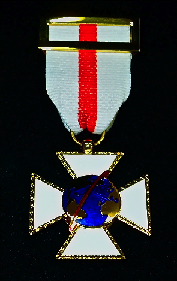Order for the International Merit of Blood
Lua error in package.lua at line 80: module 'strict' not found.Lua error in package.lua at line 80: module 'strict' not found.
Order for the International Merit of Blood[edit | edit source]
The Order for the International Merit of Blood is a prestigious international award established to recognize individuals and organizations that have made significant contributions to the field of blood donation and transfusion. This honor is awarded by the International Federation of Blood Donor Organizations (IFBDO), which is dedicated to promoting voluntary and non-remunerated blood donation worldwide.
History[edit | edit source]
The Order for the International Merit of Blood was instituted to acknowledge the efforts of those who have demonstrated exceptional commitment to the cause of blood donation. The award serves to highlight the importance of voluntary blood donation and to encourage more individuals and organizations to participate in this life-saving activity.
Criteria[edit | edit source]
Recipients of the Order for the International Merit of Blood are selected based on their outstanding contributions to the promotion of blood donation. This includes efforts in raising awareness, organizing blood donation drives, and supporting the infrastructure necessary for safe and efficient blood transfusion services. The award is open to both individuals and organizations that have shown a long-term commitment to these goals.
Significance[edit | edit source]
The Order for the International Merit of Blood plays a crucial role in the global effort to ensure a stable and safe blood supply. By recognizing the achievements of those who contribute to this cause, the award helps to inspire others to engage in similar activities. It also serves to bring attention to the ongoing need for blood donations and the impact they have on saving lives.
Ceremony[edit | edit source]
The award ceremony for the Order for the International Merit of Blood is typically held during international conferences or events related to blood donation. During the ceremony, recipients are presented with the insignia of the order, which symbolizes their dedication and service to the cause of blood donation.
Related pages[edit | edit source]
Search WikiMD
Ad.Tired of being Overweight? Try W8MD's NYC physician weight loss.
Semaglutide (Ozempic / Wegovy and Tirzepatide (Mounjaro / Zepbound) available. Call 718 946 5500.
Advertise on WikiMD
|
WikiMD's Wellness Encyclopedia |
| Let Food Be Thy Medicine Medicine Thy Food - Hippocrates |
Translate this page: - East Asian
中文,
日本,
한국어,
South Asian
हिन्दी,
தமிழ்,
తెలుగు,
Urdu,
ಕನ್ನಡ,
Southeast Asian
Indonesian,
Vietnamese,
Thai,
မြန်မာဘာသာ,
বাংলা
European
español,
Deutsch,
français,
Greek,
português do Brasil,
polski,
română,
русский,
Nederlands,
norsk,
svenska,
suomi,
Italian
Middle Eastern & African
عربى,
Turkish,
Persian,
Hebrew,
Afrikaans,
isiZulu,
Kiswahili,
Other
Bulgarian,
Hungarian,
Czech,
Swedish,
മലയാളം,
मराठी,
ਪੰਜਾਬੀ,
ગુજરાતી,
Portuguese,
Ukrainian
Medical Disclaimer: WikiMD is not a substitute for professional medical advice. The information on WikiMD is provided as an information resource only, may be incorrect, outdated or misleading, and is not to be used or relied on for any diagnostic or treatment purposes. Please consult your health care provider before making any healthcare decisions or for guidance about a specific medical condition. WikiMD expressly disclaims responsibility, and shall have no liability, for any damages, loss, injury, or liability whatsoever suffered as a result of your reliance on the information contained in this site. By visiting this site you agree to the foregoing terms and conditions, which may from time to time be changed or supplemented by WikiMD. If you do not agree to the foregoing terms and conditions, you should not enter or use this site. See full disclaimer.
Credits:Most images are courtesy of Wikimedia commons, and templates, categories Wikipedia, licensed under CC BY SA or similar.
Contributors: Prab R. Tumpati, MD

